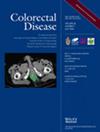Sexual dysfunction after colorectal and anal cancer is common but rarely identified and treated, although effective treatment options do exist. Therefore, we recently established nurse-led clinics for the treatment of sexual dysfunction after pelvic organ cancer at two Danish university hospitals. The aim of this paper is to present patients' clinical characteristics, the treatments offered and improvements in sexual function recorded.
In this cohort study, colorectal and anal cancer patients were referred to the clinics at any time point after their cancer treatment. Specialized treating nurses identified and registered organic sexual disorders and psychological concerns at the first visit, and initiated treatments. Treatments were algorithm-based and rooted in a biopsychosocial approach. Patient-reported outcome measures were completed at baseline and 3 months after discharge.
Among 127 referred patients, 78% were men. The mean age was 60.6 years (SD 10.4 years) and the women were a mean 7.3 years younger than the men (p = 0.001). Eighty per cent were rectal cancer patients. The most prevalent disorder was erectile dysfunction in men (95%) and dyspareunia in women (71%). Psychological concerns were registered in 53% of men and 54% of women. Pharmacological treatments, mainly phosphodiesterase-5 inhibitors, were prescribed to 87% of men, and local oestrogens were prescribed to 54% of women. Instructions in the use of sexual aids were given to 22% of men and 42% of women. Furthermore, sexual counselling/therapy was offered to 44% of men and 92% of women to address sexuality related psychological problems. Three months after discharge, a clinically relevant improvement of ≥1 point was found in 68% of patients in at least one of three single items measuring ‘Meaningful sex life’, ‘Sexual needs met’ and ‘Overall rating of sex life’ on a five-point Likert-scale.
At nurse-led clinics, specialized nurses can effectively identify and treat sexual problems in patients with sexual dysfunction following colorectal/anal cancer. Organic dysfunctions were prevalent, and psychological problems characterized most patients. This highlights that treatment needs to be multidisciplinary and that patients benefit from specialized care.



